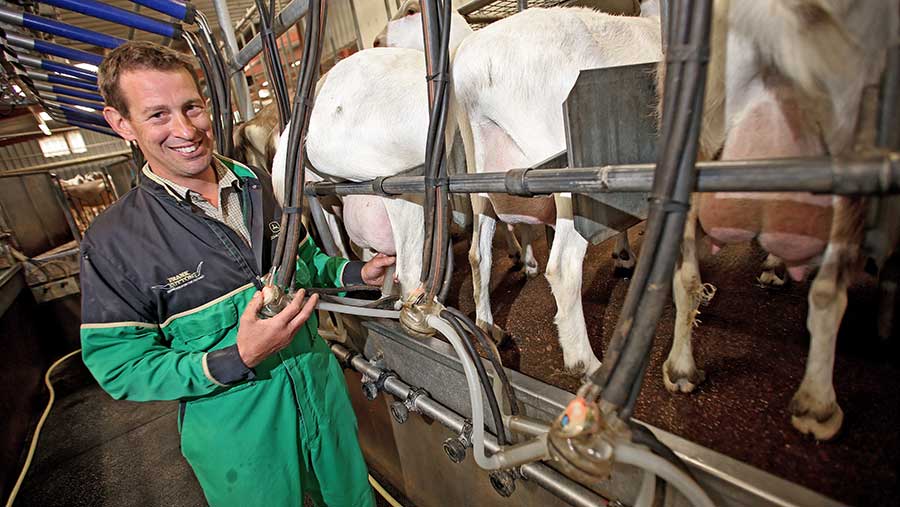Farmer Focus: We are now on A and B pricing
 Gary Yeomans © Richard Stanton
Gary Yeomans © Richard Stanton We have had a significant reduction in our milk price from 1 April. It is the first time in 16 years of producing goat’s milk that our price has been cut.
I have previously outlined the reasons in this column with general oversupply being the main driver, as with any other market. We are now on A and B pricing, with the B price significantly below the cost of production.
Recently, our benchmarking group met to go through the figures for last year. We now have three years’ worth of data, so are building up some good information.
We have included more detail each year. My goats need to be doing 1.8 litres of milk each day before they are in profit, and that was before the price was cut.
See also: Producers ‘devastated’ by goat milk contract termination
Snow and ice
Hopefully the snow is a distant memory now. Like everyone, we had our share of problems with a frozen parlour and frozen water bowls.
Typically, on the same day as the snow, the cows started calving with two sets of twins and another big bull calf that we struggled to get out.
After stomach tubing him with goat colostrum and bottle feeding him for a few days, we eventually got him up and suckling the cow.
The fine snow was blowing in through vented sheets and space boarding so badly that we moved the cows with twin calves into the stone barn. It shows that they knew what they were doing in the old days as it was dry and warm in there.
The maiden goatlings have all been kidding quickly and milking is at least a two-person job, as we have new goats to milk nearly every session. The main problem is goatlings coming in too fast and getting jammed in the stalls, although they do learn quite quick and don’t kick and muck as much as heifers do.
Gary and Jess Yeomans run a herd of 700 milking goats across 100ha, which supplies a local cheese factory. They also own a small pedigree Welsh Black suckler herd, which grazes permanent pasture in Abergavenny, Monmouthshire.
